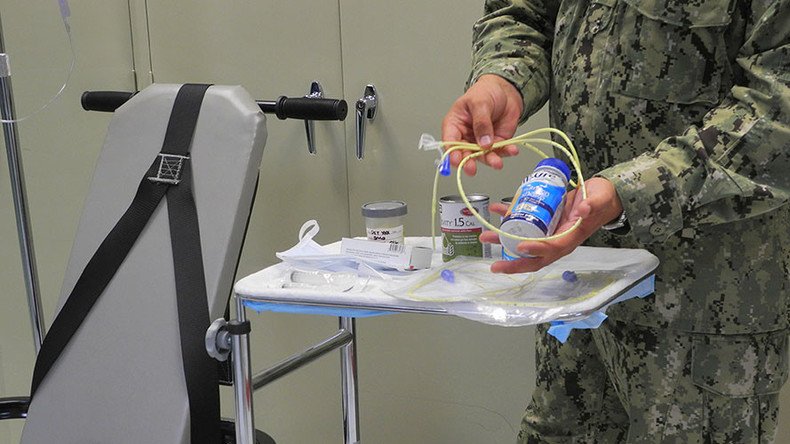Prison officials force-feed inmates on hunger strike against solitary confinement

Officials are force-feeding three inmates at two Wisconsin correctional facilities who have spent two and a half weeks on a hunger strike. The prisoners are protesting long-term solitary confinement, which many believe is a form of torture.
On Friday, Wisconsin Department of Corrections officials admitted to force-feeding Ensure, a nutritional energy drink, and water to three inmates through a nasal tube two to three times a day for the past week, the Milwaukee-Wisconsin Journal Sentinel reported.
Half a dozen inmates began refusing food two and a half weeks ago as part of the “Dying to Live” campaign. Their goal is to have the state limit the use of solitary confinement, which many find to be inhumane. However, the use of force-feeding on the three inmates is state-sanctioned as long as a physical evaluation determines that the prisoner’s life is in jeopardy.
Cesar DeLeon, 34, is one of the inmates being force-fed. He was diagnosed with moderate to severe malnutrition.
“[DeLeon] is in imminent danger of suffering serious harm or death unless he is given medical treatment, including, if necessary, involuntary feeding or hydration,” physician Jeffrey Manlove wrote in a report to the Columbia County Circuit Court.
Former inmate Talib Akbar is familiar with both hunger strikes as well as solitary confinement. Akbar once spent as long as ten months in solitary. He told RT that he went on several hunger strikes during his 17-year long sentence behind bars, with one lasting as long as 21 days.
He explained that Wisconsin gave him two choices: drink Ensure or be force-fed. He chose to drink the Ensure, but the prisoners involved in the most recent strike do not have that luxury. Instead, the force-feeding procedure involves being restrained and having feeding tubes inserted down their nasal passages, into their stomachs.
Akbar claims the practice also involves some power play, saying, “It’s been reported that some of these guys have been hurt while officers are standing there, holding them in restraints and laughing at them.”
This is a technique that was also used at Guantanamo Bay for other prisoners who attempted to go on hunger strikes. The United Nations, the American Medical Association and the American Civil Liberties Union have all condemned the practice.













